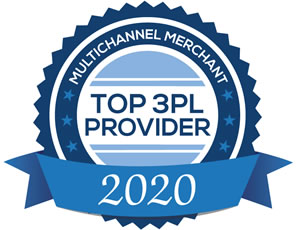
Over 25% of consumers are signed up for subscription box services. The industry now contains over 3,500 established box services worth roughly $10 billion. And, according to MultiChannelMerchant, 75% of DTC (direct to consumer) brands will offer subscription services by 2023. As this model becomes more popular, many brands are wondering if they should ride this wave with their own subscription boxes or supply their products to mixed or mystery boxes to attract new customers. At the same time, fulfillment partners need to tone up their skills and highlight their capabilities in this area to attract and retain more clients.
Subscription boxes are beneficial to everyone, which is one of the reasons they have become so popular across the board. Here are some of the benefits.
Consumers
-
Save money
-
Try new products
The benefits to consumers are simple. Not only can they avoid running out of products that they use regularly and count on, they also save money on these products. Plus, they can discover new products in the samples included in the boxes. Sometimes the boxes are random selections, while other boxes are selected entirely by the consumer. Each has its own benefits. In a previous post, we explored some of the popular subscription box options.
Brands
-
Better order forecasting
-
Enhance customer loyalty
-
Improve bottom line
Order Forecasting
The subscription box model helps regulate this flow by grouping orders and standardizing the activity among subscribed customers. Although some will cancel their subscriptions, the overall pattern will be more regular than businesses without subscription options, evening out cash flow and helping predict revenues month over month.
Back in the dark early days of e-commerce, a business would need to manually create reorder logic to ship to a customer each month. Today there are numerous services that provide this capability within existing e-commerce platforms, communicating with fulfillment partners as well as the customer and fully automating the process.
Customer Engagement and Loyalty
Subscribing is an act of loyalty. This model helps build a relationship between the customer and the brand. The consumer is more likely to purchase from the business that they deal with so regularly and the business has an easier time creating engagement for promotions or new items and cross-selling. Building this level of trust paves the way for potential up-sells. Familiarity breeds customer loyalty in this case. And it's worth noting that many of these brands would not have encountered or attracted the customers without the exposure to product trial that subscription boxes create.
Bottom Line Benefits
But subscription boxes can also save the brand money. By regulating order flow, there is more predictability in inventory, which prompts a leaner supply chain and reduces carrying costs. At the same time, the brand gains new customers and a more predictable order flow.
Fulfillment Services
-
Better forecasting
-
Fill niche services
Shipping large volume for a client once per month helps a 3PL better predict staffing needs. 3PLs are accustomed to ramping up staff for peak holiday seasons, but when a client has a very successful sales promotion without warning, this can create a strain on the fulfillment operation. Again, subscription boxes help regulate this flow and make the peaks more predictable. Not only does the fulfillment partner benefit from more regular peak order volumes, but this improves efficiency which impacts the 3PL's bottom line.
Much like the brands themselves, fulfillment partners can forecast revenue more easily with the more regulated pattern lent by subscriptions.
Fulfillment services who are adept at serving the subscription box market are prepared to handle the relevant logistics. These companies have worked out the kinks and are set up to provide service to this niche, which is growing rapidly. This expertise helps them provide quality service to their clients across a variety of fulfillment scenarios.
Conclusion
The subscription box model works well for all parties in the transaction.
- Predictability (of delivery, order flow, revenue)
- Efficiency
- Relationships
- Saves money (retail prices, inventory, supply chain, preparation)
If your business is not involved in subscription service, this may be a good time to research your options. Almost every brand has a product that fits in one or more of these boxes.
Business Tips and Industry News
For more news and tips on all things business and e-commerce, visit our e-zine. Our e-zine is also available as an rss feed.



